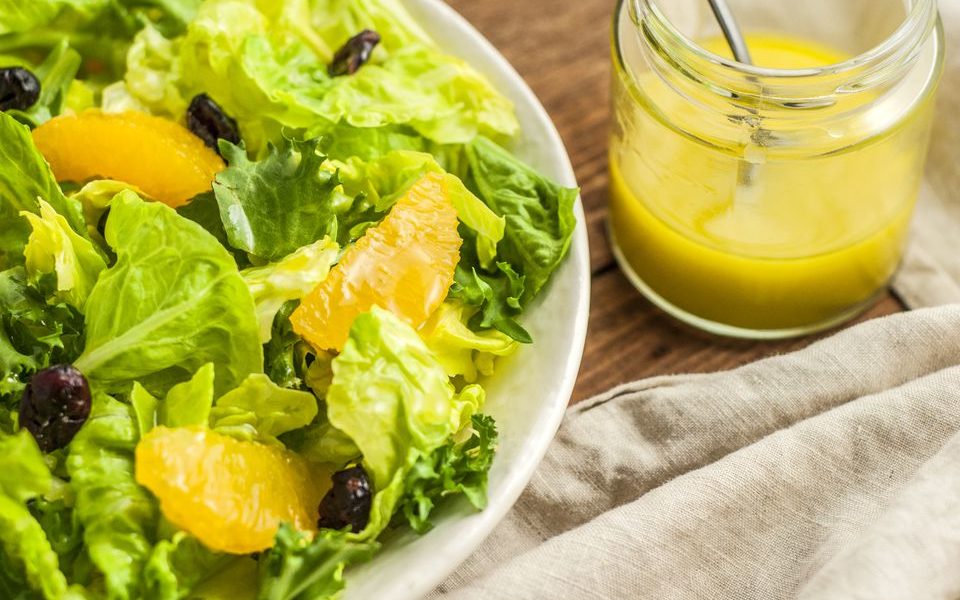
By Shelley Balls
UW Extension, Nutrition
and Food Safety Educator
Do you have a favorite homemade salad dressing? If not, no worries you might have a few to try by the end of this article! Making your own salad dressing sounds intimidating at first but you would be surprised at how simple it can be. Homemade salad dressings are flexible and provide better control over your diet. There are huge cost savings when you make your own fresh salad dressings at home. You might even consider them fun to create and typically you will have all the ingredients you need already in your kitchen! Homemade salad dressings are also bursting with flavor!
• Start with Your Base
When you start with a base recipe, you can easily add or omit ingredients to customize to your own taste preferences or the type of salad/dish you are making. Some things you will want in your pantry include different types of vinegars, oils such as canola and olive, variety of mustards, herbs and even sweeteners. Honey works as a great sweetener, as well as pure maple syrup. You’d be surprised at how many vinegars are out there, so don’t be afraid to get creative! Extra virgin olive oil, also known as EVOO is a great source of flavor in your dressings, but it also provides healthy fats that our bodies need.
• It’s Simple!
First you want to put all your ingredients into a jar or some type of small container with a lid that seals well. Make sure the lid is tight and shake well or blend… and that’s it, you’re ready to eat it! Once blended drizzle on top of your salad of choice. Store any leftovers in the fridge for 1-2 weeks in an airtight container. Take the vinaigrette out of the fridge and place at room temperature for about 30 minutes before you need it to liquify your oil again. Your dressing may need to be shaken before serving if ingredients separate. Store-bought dressings do not solidify or separate when placed in the fridge because they have emulsifiers in them, so expect some differences between homemade and store bought. Below are a few of my favorite homemade dressings to get you started.
• Honey Mustard Dressing
Recipe Source: University of Tennessee
Ingredients:
2 tablespoons nonfat Greek yogurt
2 tablespoons Dijon mustard
2 tablespoons honey
Salt and pepper to taste
• Balsamic Vinaigrette
Recipe Source: University of Tennessee
Ingredients:
3 tablespoons balsamic vinegar
½ cup or less canola or olive oil
½ tablespoon Dijon mustard
Salt and pepper to taste
Cilantro Lime
Recipe Source: Eating Bird Food
Ingredients:
¼ cup olive oil
Juice of 2 limes
2 tablespoons fresh cilantro, chopped
2 teaspoons minced or pressed garlic
1 teaspoon maple syrup
½ teaspoon salt
½ teaspoon ground pepper
¼ teaspoon ground coriander
• For More Than Just Salads
So, what else can you put these delicious dressings on besides a green salad? Use homemade dressings to flavor pizza, stir fry, beans, sandwiches, wraps, pasta, marinate protein foods, add flavor to whole grains, toss with vegetables before grilling or roasting, or use as a dip for vegetables. Are you ready to try making your own at home?






